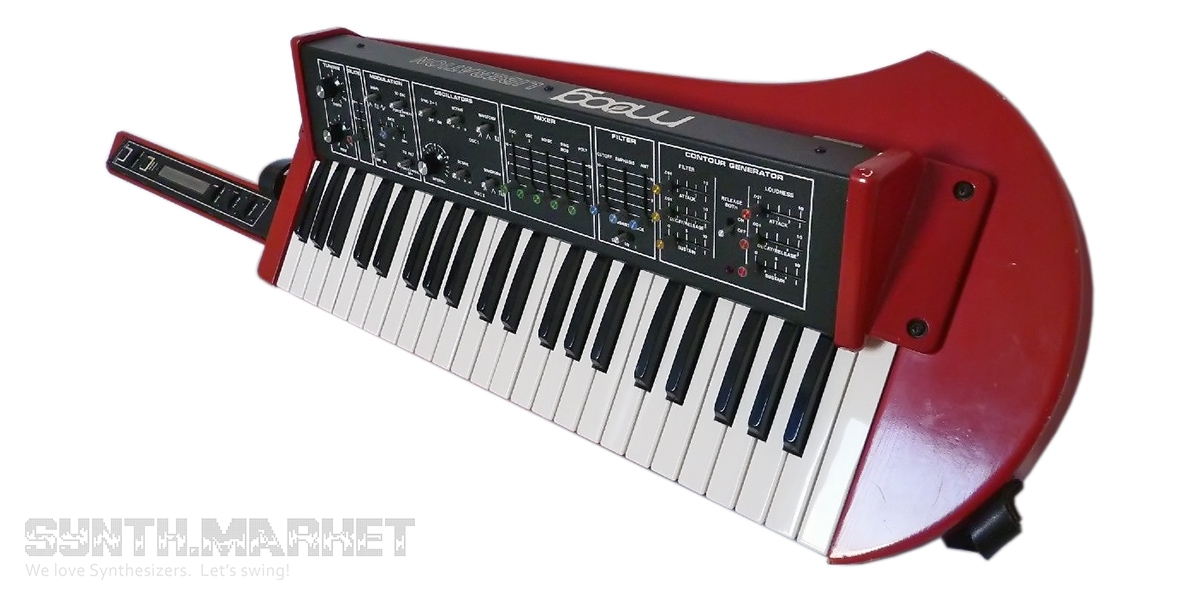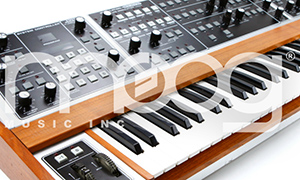Moog Music was among of the brands which mastered the new synthesizer format intrinsic to the rock era. Keytar allowed the keyboardists to move around the stage as easily as guitar players did. To reduce the weight on the shoulders of the "keytarists", the heaviest part of the synthesizer (power supply unit) was placed in a separate 2U rack case.
The basis of the synthesizer is two analog VCOs capable of producing three types of waves: sawtooth, triangular, square. Each voltage controlled oscillator has an independent octave switch, and the frequency of VCO2 can be shifted to an interval in relation to VCO1.
In addition to two VCOs that can only work in monophonic mode, Liberation provides a polyphonic mode. It operates according to the basic square wave dividing which allows the device to reproduce chords with organ-like sound.
For modulation, an LFO with a selection of wave types is provided: a triangle, a square wave and a complex pulse signal. The modulation signal can be sent to modulate the VCO and/or VCF.
In the mixer section, signals from two VCOs, a noise source, a polyphonic generator and a ring modulator are mixed. The resulting signal is sent to the VCF.
The voltage controlled low-pass filter (LP VCF) has a classic four-step Moog structure with a slope of 24 dB per octave. Adjustment of cutoff frequency, resonance and modulation depth are provided. There is also a keyboard tracking function which can be switched off (the higher the note pressed, the higher the cutoff frequency of the filter).
In Liberation, two envelope generators are built in, with independent settings for attack time, decay/ release and sustain. The envelope signal is directed to control VCF and VCA.
On the "fretboard" of the keytar there are modulation wheels, the cutoff frequency of the filter, the volume and the pitch bend controller.
The "force amt" wheel function is selected by the "bend/mod" switch.
Moog Liberation was a great success, among the users there are Jean Michel Jarre, Apollo 440, The Human League, 808 State.









